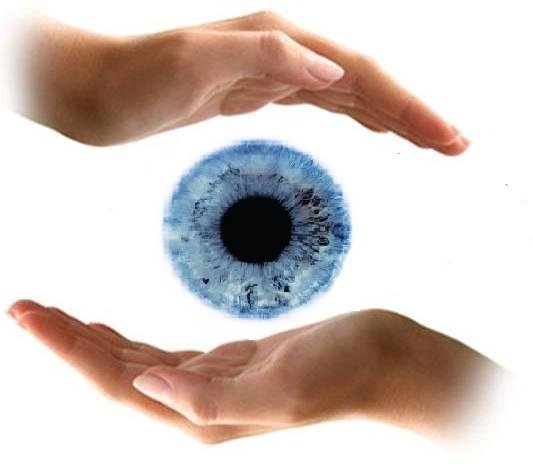Leading Retina Services Near Me: Specialist Look After Your Eyes
Leading Retina Services Near Me: Specialist Look After Your Eyes
Blog Article
Every Little Thing You Required to Find Out About the most up to date Technologies in Glaucoma Treatment and Eyecare
In the world of eye wellness, advancements in the treatment and management of glaucoma have actually been steadily progressing, leading the means for improved client care and end results. From sophisticated analysis devices that supply unprecedented insights into the disease development to cutting-edge medical strategies that promise greater accuracy and quicker recuperation times, the landscape of glaucoma treatment is undergoing a significant transformation.
Advanced Diagnostic Technologies
Advanced diagnostic modern technologies play an important function in the early detection and monitoring of glaucoma, permitting much more effective treatment and monitoring of the problem. Among these technologies, optical coherence tomography (OCT) stands out as a non-invasive imaging strategy that gives in-depth cross-sectional pictures of the retina, optic nerve head, and retinal nerve fiber layer. This high-resolution imaging helps medical professionals examine structural changes in the eye created by glaucoma, enabling them to intervene without delay.
Additionally, aesthetic field screening, such as automated perimetry, is one more vital analysis tool for examining glaucoma-related vision loss - cataract care service. This examination determines the level of sensitivity of a client's aesthetic field, assisting to discover any kind of locations of vision loss or distortion. By combining OCT imaging with aesthetic field screening, health care providers can obtain an extensive understanding of the illness's progression and dressmaker therapy prepares accordingly
Minimally Intrusive Operation
In the realm of glaucoma monitoring, the emphasis moves towards minimally invasive procedures as a positive approach to deal with the development of the condition complying with advanced diagnostic evaluations such as optical comprehensibility tomography (OCT) and visual area screening. Minimally invasive glaucoma surgical procedures (MIGS) have acquired appeal due to their efficiency in lowering intraocular pressure while minimizing the dangers and recuperation times connected with standard glaucoma surgical procedures. These procedures are normally executed through small cuts, usually along with cataract surgical treatment, making them much less invasive and much more comfortable for individuals.
Some usual MIGS treatments include trabecular micro-bypass stents, which improve the outflow of aqueous humor, and micro-sized implants that improve drain in the eye. Furthermore, laser procedures such as discerning laser trabeculoplasty (SLT) supply a non-invasive alternative for decreasing intraocular pressure. By incorporating these minimally invasive techniques into glaucoma management, ophthalmologists can provide individuals with effective treatment options that prioritize safety and quick recovery, ultimately improving long-term outcomes for people with glaucoma.
Unique Medicine Treatments
Arising medication therapies present promising avenues for boosting the medicinal monitoring of glaucoma, supplying cutting-edge techniques to attend to intraocular stress control and illness progression. One novel medicine treatment that has gathered attention is Rho kinase preventions. These drugs function by targeting the Rho kinase pathway, which contributes in managing the tone of the trabecular meshwork, the eye's water drainage system. By inhibiting this pathway, Rho kinase preventions assist to improve liquid wit outflow, thereby lowering intraocular stress.

Telemedicine and Remote Monitoring
With the development of novel drug therapies increasing the therapy landscape for glaucoma, the combination of telemedicine and remote tracking emerges as a pivotal part in boosting individual care and disease monitoring. By using telemedicine and remote surveillance, medical care carriers can boost access to care, improve person conformity, and discover potential concerns early, leading to much better results for people with glaucoma. Accepting telemedicine and remote tracking in glaucoma management stands for a substantial innovation in enhancing individual care and therapy effectiveness.
Personalized Treatment Strategies
Advancing beyond typical one-size-fits-all techniques, customized treatment methods tailored to private person attributes are revolutionizing the administration of glaucoma. By tailoring treatment strategies based on elements such as age, condition severity, way of life, and various other health conditions, eye doctors can maximize outcomes and enhance client fulfillment.
Personalized therapy methods in glaucoma include a thorough analysis of each patient's distinct profile. This might consist of hereditary screening to recognize specific risk elements, imaging methods to examine architectural modifications in the eye, and practical examinations to examine aesthetic area loss. By incorporating these individualized understandings, medical care service providers can establish targeted interventions that deal with the underlying sources of glaucoma progression for every individual.
Furthermore, developments in technology have enabled the development of personalized treatment alternatives such as minimally intrusive glaucoma surgical procedures (MIGS) customized to the individual's certain requirements - retina service near me. These treatments supply efficient intraocular pressure control with fewer problems, improving the overall top quality of treatment for glaucoma individuals. Accepting personalized therapy techniques marks a significant standard shift in glaucoma management, highlighting precision medication to provide tailored remedies for much better client outcomes
Verdict
To conclude, the current innovations in glaucoma therapy and eyecare include progressed diagnostic technologies, minimally intrusive operations, novel medicine therapies, telemedicine and remote monitoring, and individualized treatment strategies. These developments are revolutionizing the method we diagnose and deal with glaucoma, supplying more reliable and customized alternatives for clients. By remaining up-to-date with these advancements, medical care professionals can give better care and boost outcomes for people with glaucoma.

With the advancement of novel medicine therapies broadening the treatment landscape for glaucoma, the assimilation of telemedicine and remote monitoring arises as a crucial component in boosting patient care and disease administration. hearing service near me. Welcoming telemedicine and remote monitoring in glaucoma administration stands for a significant improvement in maximizing patient care and treatment effectiveness
In final thought, the newest advancements in glaucoma therapy and eyecare include advanced diagnostic modern technologies, minimally invasive surgical procedures, novel medication treatments, telemedicine and remote surveillance, and customized treatment approaches.
Report this page